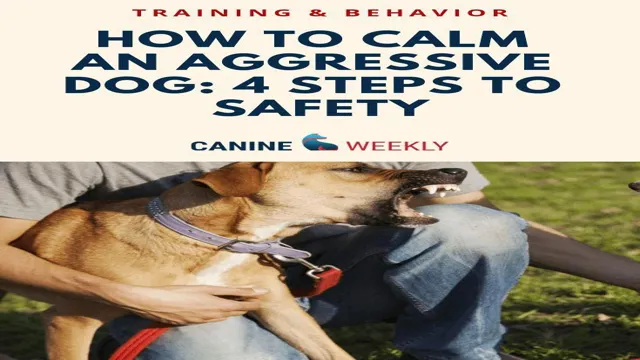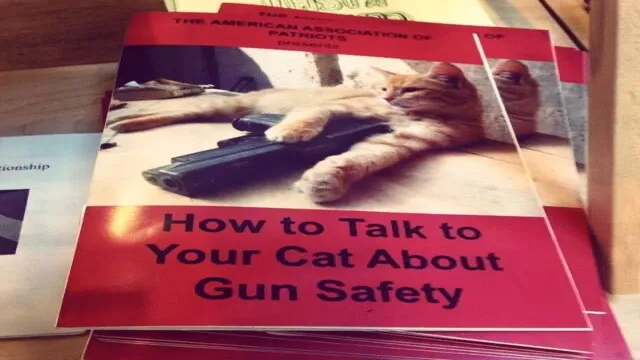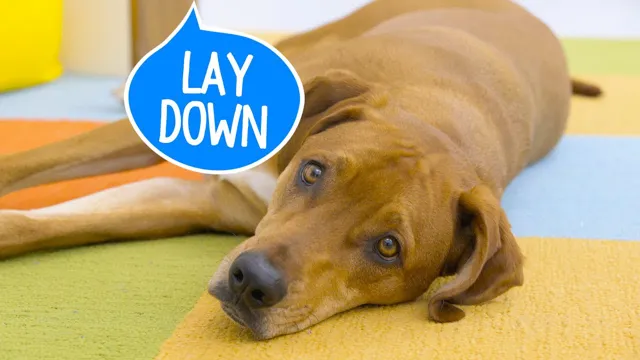Teaching Your Dog to Stay Calm – A Step-by-Step Guide

ness Do you have a dog that barks at visitors, jumps up on people, and won’t stay calm when you have company over? Teaching your dog to be calm can be a challenge, but it is definitely possible. With a little patience and dedication, you can teach your pup to remain calm and well-behaved in any situation. In this blog, we will discuss the best ways to teach your dog calmness and help your pup become the best version of themselves.
The Benefits of Teaching Your Dog Calm
Teaching your dog to remain calm can have many benefits for both you and your pup. A calm dog is less likely to become a menace to the neighborhood, is easier to control, and is more enjoyable to be around. But how do you teach your dog to remain calm? The first step to teaching your dog calm is to set boundaries. Let your dog know what behaviors are acceptable and which ones are not. You can do this by providing rewards for calm behaviors and consequences for disruptive behaviors.
Establishing a consistent routine for your dog can also help with reinforcing calm behaviors. Next, practice calming exercises with your pup. Teaching your dog how to relax can help them remain calm in stressful situations. Start with simple commands such as “Sit”, “Stay”, or “Lie Down” and make sure to reward your dog when they obey. You can also practice activities such as massage, deep breathing, and stretching to help your pup learn how to relax.
Finally, provide your pup with plenty of mental and physical stimulation. Make sure to give your pup plenty of opportunities for exercise, play, and mental stimulation. This will help them burn off excess energy, reduce stress, and increase their overall sense of well-being. By following these tips, you can help your pup learn to remain calm and relaxed. By teaching your pup calm behaviors, you can help them become a better behaved companion and make them more enjoyable to be around.
So, don’t be afraid to start teaching your pup how to remain calm today!
Less Stress
Are you exhausted from constantly trying to teach your dog how to stay calm? Does it feel like you’re at the end of your rope and you just don’t know what to do? Don’t worry, you’re not alone. Teaching a dog to stay calm can be a difficult and stressful process, but with a few simple strategies, you can help your pup become a much more relaxed companion. Here are some tips on how to teach your dog to keep calm and stay relaxed: Establish a routine, create a calm environment, provide plenty of exercise, practice positive reinforcement, and be consistent. By following these tips, you’ll be able to help your pup learn to stay calm and enjoy being around you.

Improved Safety
Teaching your dog to stay calm is an important part of pet ownership. Not only does it help keep your pup safe, but it can also help them be more comfortable in stressful situations. Fortunately, there are a few simple steps you can take to help your dog stay calm. Start by setting boundaries and expectations in your home, teaching basic commands such as sit and stay, and providing plenty of mental and physical exercise. With consistent practice and patience, your pup will soon learn how to stay calm, even in challenging situations.
Increased Bond
Teaching your beloved pooch how to stay calm can be a valuable step in your dog’s training and development. With a few simple exercises and tricks, you can help your pup learn to relax and keep their cool, even in potentially stressful situations. From teaching your pup to stay in a “down-stay” position for a set period of time to introducing calming scents and sounds, there are plenty of ways to help your pup work on their emotional regulation and build a stronger bond with you in the process!
Developing a Training Plan
Developing a Training Plan for Your Dog: How to Teach Them Calm Training your dog can be a challenging task, but it doesn’t have to be. One of the most important things you can do when it comes to training is developing a plan. Having a plan to follow will help you keep track of what you’re teaching your pup and ensure that they are learning the desired behaviors. One behavior that is often difficult to teach is calmness. To help you get started, here are some tips to help you develop a training plan for teaching your pup to remain calm.
First, it’s important to understand that teaching your pup to remain calm is a process that will take time. You should expect to take several weeks, or even months, to achieve the desired results. Before you begin, identify what you want your dog to do when they are calm. This could be things like lying down, sitting, staying in one spot, or even just not barking. Next, break down the steps of the training process.
Start with basic commands such as “sit” and “stay” and then move on to more difficult commands such as “lie down” and “be still.” As your pup masters each step, reward them with verbal praise, treats, or playtime. Once your pup is able to perform the desired commands, work on distractions. Introduce things like people, other animals, and different noises in small doses to help your pup remain calm in any situation. Start with short exposures and gradually increase the time and intensity as your pup becomes more comfortable.
Finally, it’s important to practice. Regular practice sessions will help your pup remember the commands and stay focused. Try to set aside at least 15-30 minutes each day to train your pup. Make sure you remain consistent with your commands and reward system. Training your pup to remain
Set Training Goals
If you want your pup to be calm and well-behaved, setting training goals is the key. It’s important to have a clear idea of what you want to teach your pup, so you can have a plan in place to help them learn. Start by breaking down the goals into small, achievable steps. For example, if you want your pup to learn to stay in one spot for five minutes, start by having them stay for one minute. As they master each step, slowly increase the time.
You can also use positive reinforcement to help teach your pup calm behaviors, like offering treats when they stay in one spot or when they respond to a command. With consistency and patience, you can help your pup become a well-mannered pup!

Formulate a Training Strategy
Having a well-trained, calm dog can be a rewarding experience for pet owners. While teaching your pup to obey commands is essential, teaching your dog to remain calm is just as important. To help your furry friend become a relaxed and well-mannered companion, here are some tips on how to formulate a training strategy that will get your pup on the right track.
First, start slow and work in short training sessions. Dogs have short attention spans and can become overwhelmed or anxious if asked to do too much in one session.Instead, focus on one command at a time and reward your pup with treats and lots of positive reinforcement when they do something correctly. Second, make sure to use consistent language and hand gestures. Dogs learn best when commands are given in the same way each time. This helps them understand the expectations and respond more quickly to your instructions. Third, be patient and remain positive.
Training can be a lengthy process and will require your patience and understanding. Don’t get frustrated if your pup doesn’t catch on right away. Instead, be encouraging and provide lots of praise when they make progress. Finally, be consistent with your training. Make sure to practice commands regularly and provide rewards when they are followed correctly.
This will help your pup understand what is expected of them and will reinforce the behaviors you want to see. With patience and consistency, you can help your pup learn to stay calm and become a well-mannered companion.
Start Training
Training your pup to be calm can be a difficult but rewarding process. Knowing how to teach your dog to listen and relax can help make your home a more peaceful, enjoyable place. With patience and consistency, you can empower your pup with the tools they need to learn to keep their energy level in check. Start by establishing a daily routine and providing plenty of exercise opportunities to help your pup expend energy. Providing positive reinforcement when your pup behaves calmly will also help them learn which behaviors are desired.
Additionally, teaching your pup simple commands like “sit” and “stay” can help them to focus their energy and stay in control. With commitment and dedication, you can help your pup learn to stay calm and make your home a more pleasant environment for everyone.
Training Techniques
Training your dog to be calm and obedient is a rewarding experience for both you and your pup, but it does take some time and effort. It’s important to understand that the process of teaching your dog to be calm and obedient can be a long one. With patience and consistency, however, you can train your dog to effectively respond to your commands and show appropriate behavior. The first step in teaching your pup to be calm is to create a calm and comfortable environment. You can do this by playing calming music and providing your pup with plenty of toys and treats to keep him distracted and entertained.
Make sure to provide your pup with plenty of room to move around and explore. This will help him to learn to settle and relax in the environment. Once your pup is comfortable in the environment, it’s time to start teaching him commands. Start with basic commands such as ‘sit’ and ‘stay’ and gradually increase the complexity of the commands. When training, it’s important to be consistent and to reward your pup for good behavior.
Use treats and verbal praise to reward your pup for following commands and staying calm.
It’s also important to create a consistent and predictable routine for your pup. This will help him know what to expect and will help him understand that calm and obedient behavior is expected. Make sure to take your pup on regular walks and provide plenty of opportunities for him to explore and play. This will help him to stay focused and help him to learn how to stay calm.Finally, be patient and understanding. Training your pup to be calm and obedient can take time and patience, but if you stay consistent and reward your pup when he follows your commands, he will eventually begin to understand how to stay calm and follow your commands. With a little bit of time and effort, you can teach your pup to be a well-behaved and obedient pup.
Positive Reinforcement
Positive reinforcement is a great way to teach your furry friend how to stay calm and relaxed. By reinforcing desirable behaviors with treats, toys, and petting, you can help your pup learn how to control their emotions in a variety of situations. Whether it’s teaching them to stay on the floor when guests come over, or to stay in their crate when you leave the house, positive reinforcement is a powerful tool to help your pup learn how to stay calm and relaxed. Not only will you be providing your pup with the tools to succeed, but you’ll be rewarded with the joy of seeing your pup understand the behavior you’re trying to teach them.
Redirection
Do you find yourself frustrated when teaching your dog to remain calm? If so, you’re not alone. Many pet owners struggle with how to teach their pup to stay calm and behave in a composed manner. Fortunately, there are a few simple steps you can take to redirect your pup’s energy and help them learn better ways to express themselves. With patience, consistency, and lots of positive reinforcement, you can help your pup learn to calm themselves down and respond to cues. Start by teaching your pup basic commands like “sit,” “stay,” and “down,” and then gradually increase the difficulty of the commands as your pup learns.
With consistency and positive reinforcement, your pup will soon understand the behaviors you expect of them. Additionally, providing regular exercise and mental stimulation can help your pup release pent-up energy and stay calm. Finally, when your pup begins to become overly active, try to redirect their focus to something that is calmer and more controlled. With patience and a little bit of guidance, your pup will soon learn how to remain calm and well-behaved.
Conclusion
Teaching your dog to stay calm and relaxed may seem like a daunting task, but with patience and consistency, it can be done! Through positive reinforcement, every pup can learn how to control their energy and stay calm in stressful situations. Just remember, your pup takes cues from you, so be sure to stay calm and positive. With enough practice and love, you and your pup will be living a peaceful and happy life in no time!”
FAQs
How can I teach my dog to stay calm?
Training your dog to stay calm involves teaching them how to respond to situations that make them anxious. This can be done through positive reinforcement, such as rewarding them for good behavior and providing them with calming activities, such as walking or playing with a toy. You can also try desensitizing them to trigger situations, such as introducing them to other animals or people in a controlled environment.




